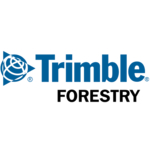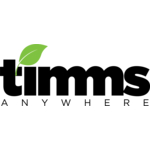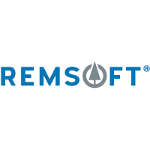TechnologyCounter provides genuine, unbiased real user reviews to help buyers make informed decisions. We may earn a referral fee when you purchase through our links, at no extra cost to you.
List of Best Forestry Software
Showing 1 - 13 of 13 productsTrimble Forestry is a leading software provider for the forestry and natural resource management industry. With a strong focus on innovation and efficiency, Trimble Forestry offers a range of advanced solutions to help organizations streamline operat...Read Trimble Forestry Reviews
TallyWorks is a software that simplifies and streamlines bookkeeping processes for businesses of all sizes. With its user-friendly interface features, TallyWorks revolutionizes the way financial data is managed, allowing businesses to make more infor...Read TallyWorks Reviews
MapX is a mapping software designed to revolutionize your navigation experience. With advanced features and unmatched accuracy, MapX is a tool for exploring and navigating the world around you. Say goodbye to outdated maps and hello to a seamless map...Read MapX Reviews
SAWSIM is a state-of-the-art software that revolutionizes the way you manage and analyze data for your business. With its powerful features and user-friendly interface, SAWSIM simplifies and enhances your data processing experience. Whether you are a...Read SAWSIM Reviews
Yard Boss is a software that revolutionizes the way you manage your outdoor space. With its user-friendly interface features, Yard Boss simplifies the complex tasks of lawn care, gardening, and landscaping. Say goodbye to manual calculations and inef...Read Yard Boss Reviews
TCruise, the ultimate travel planning solution that takes the stress out of organizing your dream vacation. With TCruise, you can easily book flights, accommodations, and activities all in one place, saving you time and hassle. Say goodbye to the ove...Read TCruise Reviews
RoadEng is a software that caters to the diverse needs of road design and construction industry. Developed with the latest technology and user-friendly interface, this software offers efficient and accurate solutions for road engineering projects. It...Read RoadEng Reviews
Cruise Control is a latest innovation in vehicle technology that allows drivers to maintain a constant speed without having to constantly adjust the accelerator. With Cruise Control, driving becomes easier, safer, and more efficient. Say goodbye to c...Read Cruise Control Reviews
TIMMSanywhere is a all-in-one solution for your business needs. Say goodbye to the hassle of managing multiple software systems and hello to a streamlined is a way of handling your companys operations. With TIMMSanywhere, you can access all your data...Read TIMMSanywhere Reviews
MillTech is a leading software company that specializes in providing innovative solutions to businesses of all sizes. With a team of highly skilled professionals, MillTech prides itself on delivering reliable is a software that helps companies stream...Read MillTech Reviews
Tree Plotter is a go-to software for efficient tree inventory management and data visualization. With its user-friendly interface features, Tree Plotter streamlines the process of tracking, mapping, and analyzing trees, making it the ideal tool for a...Read Tree Plotter Reviews
Woodstock Optimization is a software designed to streamline and enhance your business processes. With its advanced features and user-friendly interface, Woodstock Optimization is a tool for optimizing your companys efficiency and productivity. Say go...Read Woodstock Optimization Reviews
For over a century, Weyerhaeuser has been revolutionizing the forestry industry with its innovative solutions. As a global leader in sustainable timber, the company is committed to providing top-quality products and services that meet the ever-evolvi...Read Weyerhaeuser Reviews
Cruise Control is a latest innovation in vehicle technology that allows drivers to maintain a constant speed without having to constantly adjust the accelerator. With Cruise Control, driving becomes easier, safer, and more efficient. Say goodbye to c...Read Cruise Control Reviews
TCruise, the ultimate travel planning solution that takes the stress out of organizing your dream vacation. With TCruise, you can easily book flights, accommodations, and activities all in one place, saving you time and hassle. Say goodbye to the ove...Read TCruise Reviews
- What Is Forestry Tools?
- Top Reasons Why Businesses Need Forestry Tools?
- What Are the Top Key Features of Forestry Tools?
- What Are the Top Benefits of Forestry Tools?
- What Are the Steps to Choose the Right Forestry Tools?
- What Are the Types of Forestry Tools for Different Industries?
- What Are the Technology Trends for Best Forestry Tools?
- What Are the Deployment Options for Forestry Tools?
What Is Forestry Tools?
Forestry tools are essential implements utilized predominantly by professionals in the field of forestry to facilitate the execution of their occupational duties. The conventional instruments employed in the domains of forestry and fieldwork encompass chainsaws, axes, brush cutters, buckets, pole pruners, hand saws, shovels, and saws.
The utilization of forestry software equipment is imperative for the extraction of trees, eradication of vegetation, gathering of seeds, surveillance of plant life, and various other undertakings. Chainsaws are a viable tool for the safe and precise cutting of trees and limbs.
Axes are commonly employed for the purpose of severing bigger wooden objects, dividing firewood into smaller pieces, and removing vegetation from a certain area. Brush cutters are composed of a robust, gasoline-powered engine equipped with specialized blades that are meant to effectively remove vegetation from stumps or penetrate dense undergrowth.
Buckets are commonly employed for the transportation of water and various provisions in outdoor settings. Pole pruners are commonly employed for the purpose of trimming trees or shrubs situated in challenging locations, with adaptable telescoping poles.
Hand saws are compact, manually operated equipment that possess the capacity to perform a diverse range of functions, including the cutting of branches and the excavation of materials. Shovels are commonly employed for the purpose of excavating soil, rocks, or other forms of organic matter, and are versatile tools that can be utilized in the process of creating ditches or trenches.
Saws are commonly employed for the purpose of sawing larger sections of timber and effectively cutting through logs. The utilization of these instruments is integral to the majority of tasks performed by foresters in their daily professional endeavors, hence enhancing both safety and efficiency in their work.
Top Reasons Why Businesses Need Forestry Tools?
1. In order to ensure effective management of timber quality, growth, and production.
2. In order to enhance the efficiency of the thinning and harvesting processes, it is necessary to adjust the timing.
3. In order to evaluate the long-term viability of the forest ecosystem and the ability of the land to withstand and recover from disturbances, an assessment is conducted.
4. In order to establish a comprehensive record of the forest and track alterations in the landscape over a period of time.
5. The objective is to ascertain, delineate, and monitor various species of trees.
6. In order to produce cartographic representations and written summaries delineating territorial demarcations.
7. In order to identify and mitigate unauthorized timber harvesting operations, it is imperative to implement measures for the detection and prevention of unlawful logging activities.
8. In order to determine the biomass and timber volume within a given area, a calculation must be performed.
9. In order to determine the quantitative worth of wood fiber in the context of biomass production.
10. In order to quantify the quantity of carbon sequestered inside a forest ecosystem and the corresponding emissions it generates.
11. The purpose of this study is to observe and analyze long-term variations in precipitation, temperature, and air quality.
12. In order to assess soil nutrient levels, vegetation characteristics, and the overall health of trees, various measurements are conducted.
13. In order to formulate strategies for the revitalization and afforestation of a given region.
14. In order to anticipate forthcoming requirements for wood products, soil fertility, and carbon storage, it is necessary to engage in predictive analysis.
15. In order to formulate effective approaches for mitigating the occurrence of wildfires, it is imperative to engage in the development of strategic measures.
What Are the Top Key Features of Forestry Tools?
1. Data Management: The primary distinguishing characteristic of forestry instruments lies in their capacity to gather and oversee data. The aforementioned data encompasses many aspects of forest inventory, management plans, permits, revenue, and other essential information pertaining to the field of forestry.
2. Charting and Mapping: Forestry software have the capability to produce a wide array of charts and maps that depict many aspects such as property ownership, vegetation classifications, timber quantities, topographical characteristics, and additional relevant information.
3. Resource Planning: Tools are utilized to strategically determine the allocation and management of resources. This include the process of allocating financial resources, making decisions regarding the arrangement of physical elements, and establishing areas for safeguarding.
4. Species Identification: Forestry tools are helpful in the identification of tree species and other forms of vegetation within a forested environment.
5. Calculations: Best forestry software is utilized for the purpose of quantifying various parameters such as stand and tree heights, as well as tree volumes.
6. Analysis: Forestry tools has the capability to assess data and facilitate the development of decision-support scenarios. For instance, the process involves the examination of historical harvest data and its subsequent transformation into forecasts for future endeavors.
7. informed Decision Making: The utilization of top forestry software facilitates the evaluation of potential hazards and furnishes substantiating data, so enabling individuals to make judgments that are better informed.
8. Real-Time Monitoring: Forestry software possess the capability to gather and evaluate data in real-time, enabling the assessment of forest health and the examination of specific activities, such as harvesting or thinning.
What Are the Top Benefits of Forestry Tools?
1. Improved Efficiency: Forestry tools offer enhanced efficiency across a range of operations. Assistance from automated systems can contribute to the reduction of labor and time required for specific tasks, such as tree cutting, hence enhancing the overall efficiency of a forest management team.
2. Safety: The design of forestry software prioritizes safety measures, so significantly mitigating the potential for injuries and other risks commonly encountered in forest operations.
3. Cost Savings: Best forestry software exhibit cost-effectiveness in comparison to human methods due to their ability to minimize labor hours, minimize wastage, and enhance the quality of work executed.
4. Ergonomics: The utilization of forestry tools has the potential to mitigate the physical strain and tiredness commonly associated with manual labor. This feature enhances the user's degree of comfort, hence potentially enhancing overall efficiency and productivity.
5. Precision: Top Forestry software have the potential to enhance accuracy and precision beyond what can be achieved using manual approaches, hence enhancing performance and optimizing the utilization of existing resources.
6. Environmental Impacts: The utilization of forestry software has the potential to mitigate the environmental consequences linked to specific activities, such as the extraction of lumber from forested areas. This may encompass the reduction of emissions and adherence to environmental rules.
7. Adaptability: Best forestry software possesses a high degree of adaptability, rendering them highly effective in specific circumstances, owing to their capacity to accommodate diverse activities and surroundings. This intervention has the potential to enhance the overall efficiency and efficacy of forestry operations.
What Are the Steps to Choose the Right Forestry Tools?
1. First, ascertain the specific nature of the forestry tasks that will be undertaken. This will facilitate the determination of the requisite instruments for the task at hand.
2. Forestry software is imperative to take into account the dimensions and mass of the tools. The selection of appropriate tools for a given work necessitates consideration of their weight and ease of portability.
3. Consider the composition of the tools' materials. In order to get good outcomes in forestry operations, forest management software is important to utilize a robust and long-lasting instrument.
4. When searching for blades, it is advisable to seek those that possess sharpness and are easily maintainable. The significance of this is particularly pronounced in the context of tools such as saws, axes, and shearers.
5. One might consider acquiring instruments that have been specifically engineered with ergonomic features in order to mitigate the likelihood of sustaining accidents.
6. Forestry software is important to take into account additional attributes, such as the insulation and weatherproofing capabilities of the tool.
7. In order to make an informed purchasing decision, it is advisable to engage in a comparative analysis of costs and carefully evaluate customer feedback. This will assist in optimizing the value obtained from one's purchase.
8. Best Forestry software is advisable to peruse the manual in order to familiarize oneself with safety protocols and gain insights into the proper utilization of the tools.
What Are the Types of Forestry Tools for Different Industries?
The various categories of forestry tools utilized throughout diverse industries are enumerated as follows: Tools Used in Timber Harvesting: The primary tools employed in the process of timber harvesting are chainsaws, axes, wedges, handsaws, and felling saws.
1. Fire Fighting Tools: Fire rakes, shovels, Pulaskis, and McLeods are some of the tools commonly used in firefighting.
2. Tree Pruning Tools: Loppers, pole pruners, pole saws, and hand saws are indispensable implements for the practice of tree pruning. The topic of discussion pertains to aerial trimming tools. Aerial trimming necessitates the utilization of saws, pruners, and shears.
3. Silviculture Tools: In the field of silviculture, it is commonplace to employ various tools such as tree planters, prop dibbers, and bark shovels.
4. Wildlife Habitat Management Tools: Various tools are employed in the management of fish and wildlife habitats, such as bait stations, trail cameras, birdhouses, and game feeders.
5. Reforestation Tools: Seedling pliers, rehabilitation spades, and tree planting sacks are indispensable instruments for the practice of reforestation.
Forest management software encompasses a range of instruments, including increment borers, photoplotters, and bark meters, which are employed to quantify tree trunk diameters and assess various attributes of forest stands.
What Are the Technology Trends for Best Forestry Tools?
The technology trends for best forestry tools are the following:
1. Automated Solutions: The utilization of automation is increasingly pervasive in the forestry sector.
The automation system comprises of robotic sensors capable of gathering data pertaining to forests and vines, alongside machine learning and artificial intelligence algorithms that facilitate informed decision-making regarding optimal forest management techniques.
2. Internet of Things (IoT): The Internet of Things (IoT) facilitates the integration of forest management software with other applications, such as navigation systems and warehousing platforms. This type of connectivity facilitates asset tracking and monitoring, while also offering real-time data for the purpose of forest management.
3. Cloud Computing: Cloud-based solutions are gaining popularity in the field of forest management software because to the advantages offered by cloud computing, which enables the development of real-time updated applications.
4. Digital Maps: The utility of digital mapping technology is becoming evident in the differentiation of land types and vegetation. Geographic Information System (GIS) tools are proving to be crucial in facilitating effective forestry management practices, hence enabling the optimization of resource utilization.
5. Remote Sensing: Remote sensing technology plays a crucial role in acquiring real-time data pertaining to the condition of forests, hence enhancing the efficiency of resource management. This particular technology is also of great value in the context of monitoring wildlife populations.
What Are the Deployment Options for Forestry Tools?
A diverse range of solutions is utilized for the deployment of forestry tools, which is contingent upon the specific needs and preferences of the user. The prevailing approach involves employing tangible tools on the terrestrial surface, including axes, saws, and various mechanized devices.
Forest management software's particular method of deployment is deemed appropriate in situations when there is a requirement to effectively manage and conduct clear-cutting operations over a substantial expanse of land. Nevertheless, in cases when the terrain is challenging to reach, the utilization of aerial deployment emerges as the most feasible alternative.
Top forestry software encompasses the utilization of helicopters, unmanned aerial vehicles (UAVs), and various other aircraft. In the context of forest management software, the implementation of certain operations may need the utilization of fire crews and smoke jumpers due to the significant role that fire plays.
Furthermore, the utilization of remote sensing technology, specifically LiDAR systems, enables the generation of intricate cartographic representations and facilitates the continuous monitoring of vegetation dynamics over extended temporal intervals. This technology has the capability to identify atypical occurrences like as drought or infestations caused by pests.
In order to model the environment and identify suitable zones for management, a variety of software technologies, including Geographic Information Systems (GIS) and Remote Sensing, are utilized. These applications enable planners to optimize their strategy and enhance their ability to monitor activity.
In summary, there exist multiple alternatives for the implementation of top forestry software, encompassing various domains such as physical, aerial, and digital. Each available alternative contributes to the implementation of a comprehensive strategy for forestry management.













